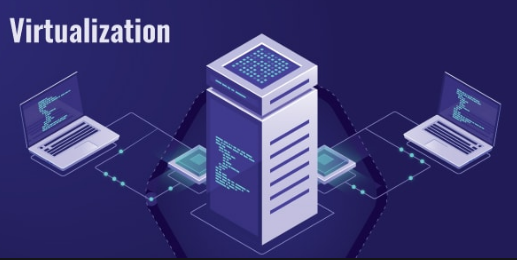Virtualization
Virtualization
It is the process that creates a virtual simulation of any information technology resource, from applications, servers, computers, storage equipment, or networks. It is simply as if you are making a second copy of your existing hardware and you can install the operating system you want even if it is different from the original system of the device. This allows more than one operating system to run on the same device without one of them affecting the other.
How is Virtualization done?
Using a special simulation program that simulates devices and creates a virtual machine that works on a real computer, and this computer on which the virtual machine was created called the host, and many virtual machines can be created on the same machine and called the guest, and each virtual machine works independently from others. It means that each device has its own operating system that may be similar or different from the rest of the virtual machines, and each device has its own programs that are installed on it according to the user’s need.
As for the manager of this process, who controls the management of the virtual machine, distributes resources to it, and how to access the real resources, it is called the hypervisor, examples of which are Xen and the Kernel Virtual Machine (KVM), which are open-source programs.
Benefits of virtualization
- It is a very effective way, especially for large companies, to reduce their expenditures on the IT infrastructure and increase the efficiency of existing devices.
- Virtualization of information technology resources allow to increase the speed, scalability, and flexibility of the information technology infrastructure, and it becomes more able to withstand work pressure because it is distributed over more than one virtual resource, which improves performance and is characterized by permanent availability.
- Virtualization reduces IT infrastructure and operating expenses, ensures business continuity, and reduces downtime.
- Providing the energy needed to operate many servers and computers, so that it became possible to use multiple virtual operating systems as one operating card for one device
- Ease of controlling your computer devices from one device. You will access all devices to monitor their work and track their performance easily
- It gives you the opportunity to try some unsafe programs to make sure that they are free from viruses or malware on the computer, as we have mentioned that the virtual machine works as a unit separate from the actual device and does not affect it
- Allow more than one operating system to run and work on one device




Comments
0 comments